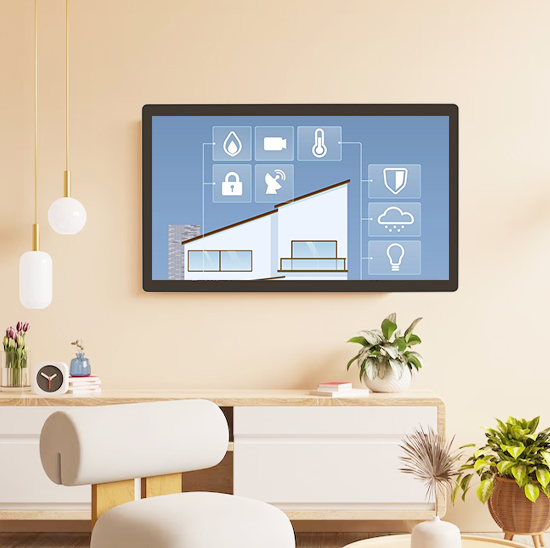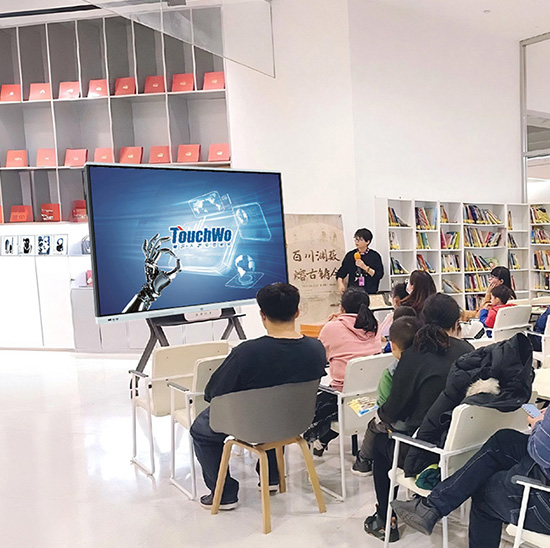Nell'era degli edifici intelligenti e della trasformazione digitale, I segni statici e le directory di carta obsolete stanno rapidamente diventando reliquie del passato. Inserisci la directory digitale: un elegante, soluzione interattiva che non solo guida i visitatori, ma migliora anche la moderna esperienza di costruzione. Che si tratti di un grattacielo commerciale, Un campus universitario, o una struttura sanitaria, Le directory interattive alimentate dalla tecnologia touchscreen stanno impostando un nuovo standard in wayfinding e visualizzazione delle informazioni.
Questa guida ti guiderà attraverso tutto ciò che devi sapere sulle directory digitali, Compreso il modo in cui funzionano, dove vengono utilizzati, i loro benefici, e come scegliere l'hardware giusto per la tua configurazione.
Cos'è un sistema di directory digitale?

Un sistema di directory digitale è un display elettronico che fornisce contenuti direzionali o informativi in un edificio, Sostituire le directory tradizionali stampate. Questi sistemi possono essere statico, mostrando un ciclo di contenuti programmati o elenchi di inquilini, o interattivo, consentendo agli utenti di toccare e navigare in menu tramite un touch screen interfaccia.
Mentre le schede di directory digitali statiche sono adatte per ambienti semplici o a basso traffico, Gli edifici moderni preferiscono sempre più le directory di edifici interattive grazie alla loro flessibilità, facilità intuitiva, e capacità di aggiornare i contenuti in tempo reale.
Se utilizzato per aiutare i visitatori a localizzare un ufficio, Trova un dottore, Oppure controlla una pianta del pavimento, Le directory digitali sono diventate strumenti essenziali in commerciale, istituzionale, e edifici pubblici allo stesso modo.
Componenti di un sistema di directory digitale
- Interfaccia touchscreen: Consente agli utenti di navigare con facilità le informazioni.
- Sistema di gestione dei contenuti (CMS): Fornisce controllo remoto sul contenuto visualizzato.
- Recinto hardware: Un resistente, Spesso unità montata a parete o indipendente progettata per uso pubblico.
- Connettività: Abilita aggiornamenti in tempo reale e sincronizzazione basata su cloud su più dispositivi.
Insomma, Una scheda di directory digitale è una soluzione completa che combina hardware e software per offrire intuitivo, Navigazione in tempo reale all'interno di un edificio.
Caratteristiche indispensabili in una moderna directory digitale
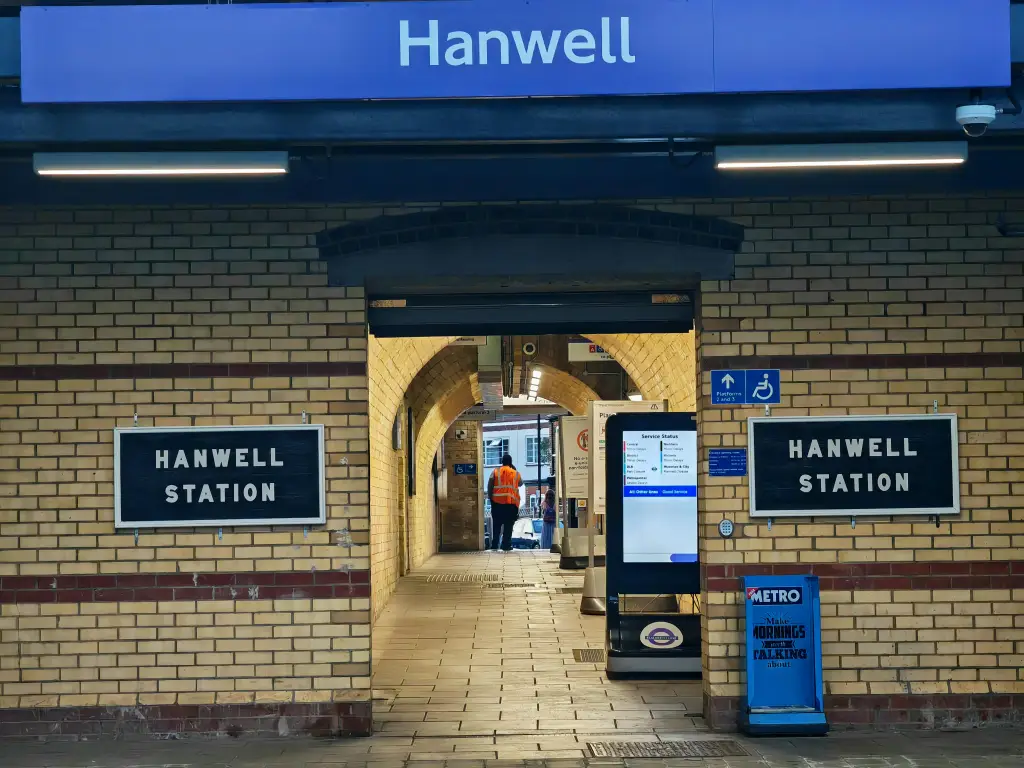
Per garantire che la tua directory digitale soddisfi le aspettative degli utenti di oggi e degli edifici, Dovrebbe includere le seguenti caratteristiche essenziali:
- Interfaccia touchscreen reattiva: Per directory interattive, Un liscio, Il display multi-touch è fondamentale. Tecnologia tocco capacitiva o a infrarossi Abilita tempi di risposta rapidi e un'esperienza più intuitiva, soprattutto in ambienti commerciali ad alto traffico.
- Sistema di gestione dei contenuti basati su cloud (CMS): Un robusto CMS consente agli amministratori di aggiornare a distanza gli elenchi degli inquilini, mappe, o annunci in tempo reale su più schede di directory digitali, Migliorare l'efficienza e la coerenza senza intervento fisico.
- Branding e design del layout personalizzato: La tua directory di edificio interattivo dovrebbe riflettere la tua identità aziendale. Questo include opzioni per aggiungere loghi, colori del marchio, stili di pianta, e messaggi di benvenuto personalizzati.
- Mappe ondente e interattive: Particolarmente utile in grandi complessi, Digital Wayfinding consente agli utenti di vedere la loro posizione attuale e ricevere una guida passo-passo per la propria destinazione, Ideal per gli ospedali, centri commerciali, o campus.
- Interfaccia multilingue e conforme ADA: Supportare più lingue e funzionalità di accessibilità come i lettori di screen o le zone di interazione al piano di sedie a rotelle assicurano che la segnaletica della directory digitale sia inclusiva e intuitiva per tutti i visitatori.
Vantaggi dell'utilizzo di un sistema di directory digitale
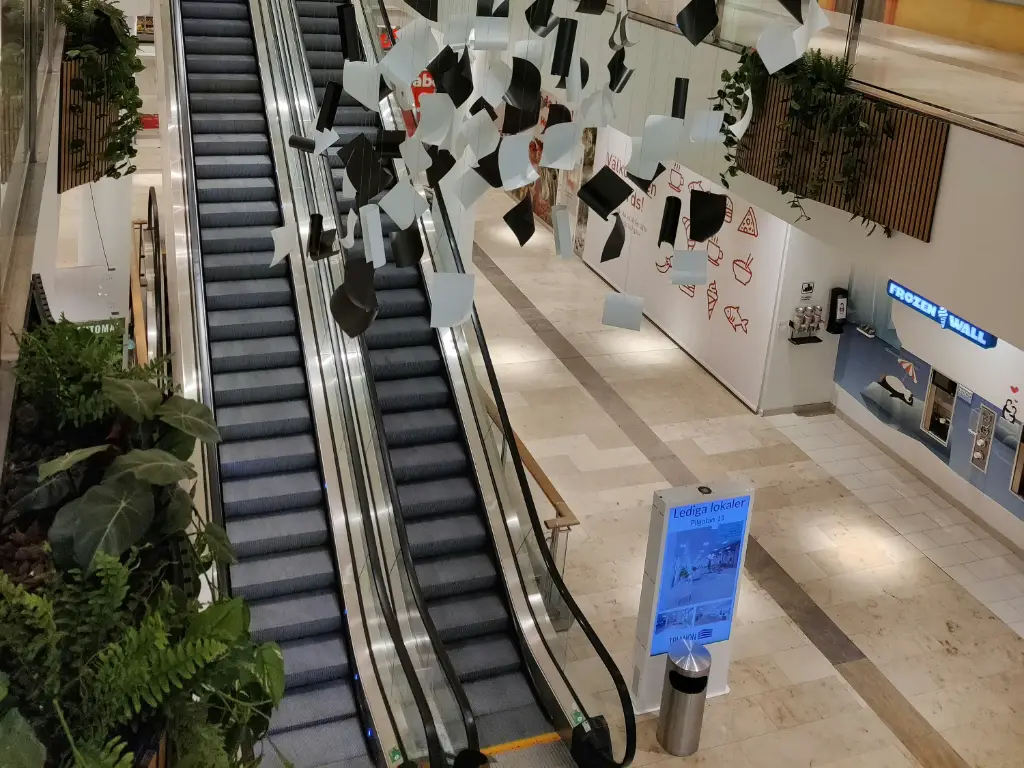
L'adozione di un sistema di directory digitale ha una vasta gamma di vantaggi sia per i gestori di edifici che per i visitatori.
1. Navigazione semplificata in ambienti complessi
In edifici multi-tenant, ospedali, o campus universitari, I segni statici sono spesso insufficienti. Una directory digitale semplifica la navigazione offrendo elenchi ricercabili e mappe trasparenti. Sia statico che interattivo, Questi sistemi riducono la confusione e consentono ai visitatori di trovare persone o luoghi con uno sforzo minimo, Migliorare il flusso complessivo del traffico e l'utilizzo dello spazio, specialmente critici nelle zone ad alto traffico.
2. Presentazione professionale che migliora le prime impressioni
Un'elegante scheda di directory digitale segnala che il tuo edificio è moderno, organizzato, e tecnologia. Rispetto alla segnaletica stampata obsoleta, Le directory digitali aggiungono appello visivo e coerenza, Il che è cruciale per mantenere un'immagine di marca di fascia alta in ambienti commerciali o aziendali. Per i gestori di proprietà, Questa estetica migliorata aiuta ad attrarre e trattenere gli inquilini premium.
3. Comunicazione dinamica per la gestione degli edifici
Oltre a un ovesting, Digital Directory Signage funge da piattaforma di comunicazione in tempo reale. Puoi trasmettere avvisi urgenti, Annunci di costruzione, o istruzioni per i visitatori, senza bisogno di sistemi di segnaletica separati. Per esempio, Gli avvisi di emergenza o le notifiche di manutenzione possono essere spinte istantaneamente su tutti i display. Questo trasforma la tua directory di edificio interattivo in un live, Hub di informazioni multifunzionali.
4. Supporto per accesso multilingue e inclusivo
Le moderne directory interattive spesso supportano più lingue, Zone touch conformi ADA, e istruzioni audio: le caratteristiche particolarmente preziose negli hotel internazionali, aeroporti, e centri medici. Queste caratteristiche inclusive assicurano che tutti i visitatori, Indipendentemente dalla competenza linguistica o dall'abilità fisica, può accedere indipendentemente alle informazioni di cui hanno bisogno, Migliorare gli standard di accessibilità dell'edificio.
5. Integrazione flessibile con ecosistemi digitali
Le directory digitali di oggi non funzionano in isolamento: possono essere collegate ai sistemi di prenotazione delle camere, Check-in dei visitatori, o database degli inquilini tramite piattaforme CMS basate su cloud. Per operatori di strutture e gestori IT, Ciò significa meno lavoro manuale e migliore coerenza dei dati. Se abbinato a hardware della directory di costruzione touch screen ad alte prestazioni, Il risultato è un'infrastruttura pronta per il futuro con funzionalità scalabili.
Dove sono usate le directory digitali comunemente?
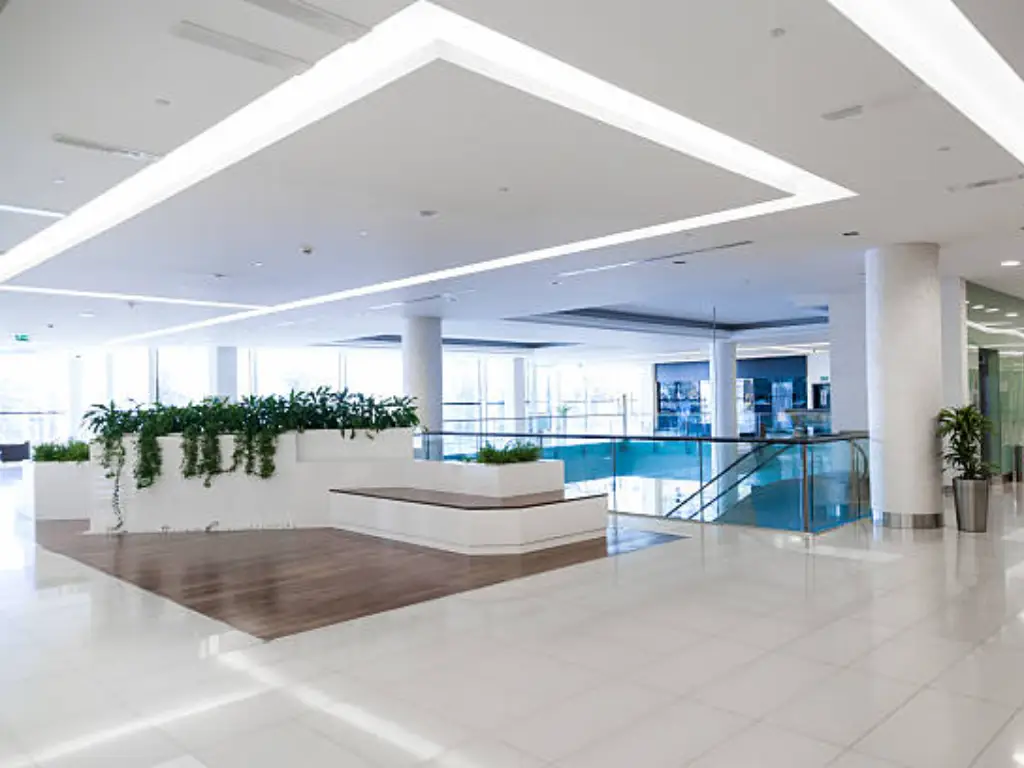
La segnaletica della directory digitale sta diventando una caratteristica standard in vari ambienti. Ecco dove è più probabile che tu li veda:
1. Edifici per uffici e parchi commerciali
Gli edifici aziendali usano spesso le directory digitali per mostrare elenchi degli inquilini, Loghi aziendali, planimetrie, e informazioni di emergenza.
2. Ospedali e strutture sanitarie
Gli ospedali usano directory interattive per aiutare i pazienti e i visitatori a trovare dipartimenti, specialisti, o anche aggiornamenti della sala d'attesa in tempo reale.
3. Università e scuole
Nei campus, Le schede di directory digitali guidano gli studenti e i visitatori di lezioni, uffici amministrativi, o luoghi di eventi.
4. Hotel e resort
Molti hotel impiegano directory di costruzione touch screen per visualizzare mappe, Elenchi di ristoranti, e programmi di eventi.
5. Centri commerciali e commerciali
I centri commerciali utilizzano directory di edifici interattive per aiutare gli acquirenti a localizzare i negozi, Controlla le promozioni, e trovare servizi come servizi igienici o parcheggi.
6. Edifici governativi e municipali
Dai tribunali ai municipi, La segnaletica digitale migliora la navigazione dei visitatori e comunica gli avvisi pubblici.
Questi casi d'uso diffusi dimostrano che le directory digitali non sono solo un lusso: sono una necessità funzionale nei moderni spazi pubblici.
Scegliere l'hardware giusto per la tua directory digitale
La selezione dell'hardware giusto è fondamentale per garantire che la tua directory digitale funzioni in modo affidabile e offre un'esperienza utente senza soluzione di continuità. Ecco i fattori chiave da considerare:
1. Dimensioni dello schermo consigliate
Le dimensioni comuni per i touch screen vanno da 21,5″ a 55″. Schermi più piccoli come 21.5″ Adatta a lobby compatte o aree a basso traffico, mentre 32″ e 43″ fornire un equilibrio di visibilità e impronta. Per grande, spazi aperti o ingressi occupati, 55″ display massimizzare la leggibilità e l'impatto.
2. Tecnologia touch: Capacitivo vs. Resistivo
I touchscreen capacitivi sono più reattivi e supportano gesti multi-touch, rendendoli ideali per directory interattive ad alto livello. Schermi resistivi, che rispondono alla pressione, sono più convenienti e utilizzabili con guanti o stili, ma generalmente offrono meno precisione e durata.
3. Opzioni di montaggio: Montato a parete, Indipendente, o incorporato
Montato a parete Le unità risparmiano spazio sul pavimento e creano un'estetica pulita, Perfetto per corridoi e lobby. Chioschi indipendenti offrire mobilità e flessibilità, Adatto per spazi multiuso o di eventi. Incorporato Le installazioni si integrano perfettamente in pareti o contatori, Fornire una configurazione discreta e resistente ai vandali.
4. Sistema operativo: Android vs. finestre
Le directory basate su Android hanno spesso costi più bassi e manutenzione più semplice, Ideale per applicazioni di segnaletica semplici. I sistemi Windows supportano software e integrazione più complessi con piattaforme aziendali, Preferito per soluzioni su larga scala o personalizzate che richiedono elaborazioni potenti.
5. Grado industriale vs. Performance di livello commerciale
L'hardware di livello industriale è creato per 24/7 operazione, temperature estreme, e alta durata: perfetta per ambienti esigenti. I dispositivi di livello commerciale sono adatti per un utilizzo interno tipico con traffico moderato, Bilanciamento dei costi e affidabilità.
A TouchWo, Siamo specializzati in tecniche di produzione avanzate tra cui G+G, G+FF Bonding, e TP+LCM Laminazione completa, Garantire una precisione e una durata del tocco superiore per tutti i nostri prodotti di directory dell'edificio touch screen. Offriamo anche esteso personalizzazione con 26 opzioni di dimensioni, permettendoti di personalizzare perfettamente il tuo hardware di directory digitale ai requisiti unici del tuo edificio.
Pensieri finali: Perché ora è il momento giusto per passare a una directory digitale
La domanda di directory digitali sta crescendo in tutti i settori. Le aziende stanno investendo in Smarter, Soluzioni di segnaletica digitale più flessibili, non solo per stare al passo con le tendenze ma per offrire un'esperienza migliore per ogni visitatore che cammina attraverso la porta.
Gli edifici moderni necessitano di directory di edifici interattive che siano scalabili, personalizzabile, e pronto per il futuro. Con la tecnologia touchscreen che diventa più conveniente e affidabile, Ora è il momento migliore per aggiornare o integrare una scheda di directory digitale nel tuo spazio.
Come produttore di touch screen affidabile con over 15 anni di esperienza da allora 2009, TouchWo è stato dedicato alla fornitura di soluzioni hardware ad alte prestazioni ai clienti 150+ Paesi, servire più di 30,000 Clienti del settore. Continuiamo a aprire la strada all'innovazione e alla qualità nel campo della tecnologia touch.
Cercando di aggiornare il tuo edificio con un affidabile, Sistema di directory digitale completamente integrato? Contattaci oggi Per ottenere consulenza di esperti e hardware su misura per le tue esigenze.
Domande frequenti
Q1: Qual è la differenza tra una directory digitale e la segnaletica statica?
Una directory digitale offre contenuti interattivi e dinamici che possono essere aggiornati in tempo reale, A differenza dei segni statici che richiedono la sostituzione manuale.
Q2: Quanto costa una directory digitale?
Il prezzo dipende dalla dimensione dello schermo, caratteristiche, e personalizzazione. In media, Aspettatevi di investire tra $ 1.500 e $ 5.000 per unità, escluse le licenze software.
Q3: Sono directory digitali sicure?
SÌ, Se abbinato a software crittografato e accesso controllato, Le directory digitali sono altamente sicure e possono gestire in modo sicuro informazioni sensibili.
Q4: Posso personalizzare l'aspetto del mio sistema di directory?
Assolutamente. La maggior parte dei sistemi consente il marchio personalizzato, layout, e contenuti per allineare con la tua identità aziendale.
Q5: Ciò che le industrie beneficiano di più dalle directory interattive?
Industrie come immobili, assistenza sanitaria, istruzione, ospitalità, e il governo beneficia di tutti le directory di edifici interattive.
Q6: Posso installare più directory in diverse posizioni e controllarle in remoto?
SÌ, con piattaforme CMS basate su cloud, È possibile gestire più unità di segnaletica della directory digitale da una singola dashboard.


